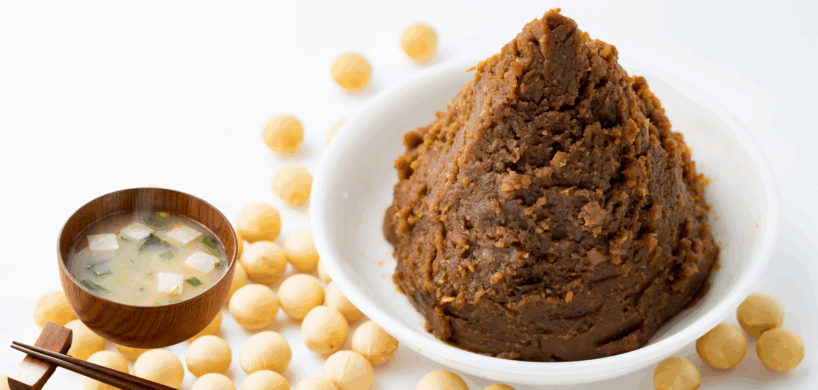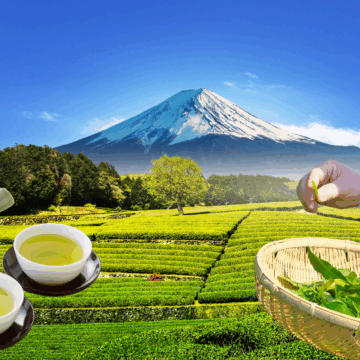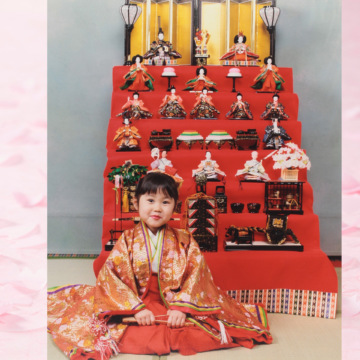Do you know why Japan is one of the world’s leading countries in longevity? Reasons for Japanese longevity include high-quality healthcare and a well-established healthcare system, relatively affordable medical costs due to the national health insurance system, easy access to hospitals, a high health consciousness leading to frequent health check-ups, and the prevalence of a traditional healthy diet.
An essential component of Japan’s traditional food culture is “MISO.” Just by continuing the habit of drinking one bowl of “miso soup” a day, it’s said to not only help prevent and improve lifestyle-related diseases but also offer various health benefits such as aiding in weight loss and promoting beautiful skin.
So, what is “MISO”? Miso is a traditional seasoning in Japan made by fermenting steamed soybeans with salt and koji, breaking down the soybean proteins. “Koji” is used in the production of traditional Japanese sake, shochu, soy sauce, miso, mirin, vinegar, and other products. Koji plays a role in converting sugars into alcohol and useful fermentation substances. While wine and cheese are also fermented foods, in Japan, miso, sake, soy sauce, and other products are made through fermentation with koji.
Japanese sake and soy sauce are highly regarded globally for their rich flavor, depth, and aroma, all born from fermentation processes in Japan.
Originally considered a luxury item cherished by temples and the aristocracy, miso was rarely used as a soup base but rather as a condiment or medicine. Over the past 1300 years, it has evolved into a staple seasoning in Japanese cuisine.
In various regions across Japan, miso with different characteristics is produced to match local ingredients, climates, food habits, and preferences. Factors such as the use of different ingredients like rice, barley, or beans, sweetness in warmer regions and spiciness in colder regions, variations in fermentation due to temperature differences, and differences in appearance like red or white miso, have led to countless varieties of miso and recipes using miso.
While many ramen shops in Japan may use homemade noodles, very few use homemade miso. This is due to the extensive labor and care required in the process and the time it takes to mature. The warm climate of Cowichan Valley is suitable for miso making.
Neko Ramen offers a miso ramen made with homemade miso, without any artificial preservatives, taking two years to complete. In other words, it’s a special “MISO” prepared with love from two years before Neko Ramen’s opening.
Please enjoy homemade miso and Japanese ramen made with homemade noodles from this region with your lovers.
This article was contributed to the Jun 2024 issue of Cowichan Valley Voice.
日本を代表する調味料:「味噌」と「麹(こうじ)」
なぜ日本は世界有数の長寿国なのでしょうか?
日本が長寿国である理由には、質の高い医療と整備された医療制度、国民皆保険制度による比較的安価な医療費、病院へのアクセスのしやすさ、健康意識の高さによる定期的な健康診断の普及、そして伝統的な健康的な食生活が挙げられます。
その日本の伝統的な食文化において、欠かせない要素のひとつが「味噌」です。
実は、毎日1杯の「味噌汁」を飲む習慣を続けるだけで、生活習慣病の予防や改善だけでなく、ダイエット効果や美肌効果など、さまざまな健康効果があると言われています。
ところで、「味噌」とは何でしょうか?
味噌とは、蒸した大豆に塩と麹(こうじ)を加えて発酵させた、日本の伝統的な調味料です。麹は、日本酒、焼酎、醤油、味噌、みりん、酢などの製造に使われ、糖をアルコールや発酵に必要な成分に変化させる重要な働きをします。
ワインやチーズが発酵食品であるように、日本でも味噌や日本酒、醤油などが麹を使って発酵させて作られます。
日本酒や醤油は、日本独自の発酵技術によって生まれる深い味わいと香りが世界中で高く評価されています。
もともと味噌は、寺院や貴族の間で大切にされていた高級品で、スープの材料というよりも、薬や調味料として使われていました。
しかしこの1300年の間に、味噌は日本料理を代表する基本調味料へと進化してきました。
味噌の多様性と地域文化
日本各地では、地域の食材や気候、食文化、好みに合わせて、さまざまな個性をもった味噌が作られています。例えば:
- 米・麦・豆などの原料の違い
- 暖かい地域では甘口、寒い地域では辛口
- 発酵期間や温度の違い
- 赤味噌や白味噌など見た目の違い
などがあり、無数の味噌の種類と、それに合わせた料理が存在します。
NEKOラーメンのこだわり味噌
日本のラーメン店の多くは自家製麺を使用しますが、自家製味噌を使っているお店はごくわずかです。
その理由は、味噌づくりには多大な手間と時間、そして愛情が必要だからです。
ここカウチンバレーの温暖な気候は、味噌づくりにとても適しています。
NEKOラーメンでは、人工保存料を一切使用せず、2年の歳月をかけて熟成させた自家製味噌を使った味噌ラーメンをご提供しています。
つまり、これは**NEKOラーメン開店の2年前から愛情を込めて仕込まれた、特別な「味噌」**なのです。
ぜひ、地元産の自家製麺と味噌を使った日本のラーメンを、大切な人と一緒に味わってみてください。
※この記事は、**2024年6月号の『Cowichan Valley Voice』**に寄稿されたものです。









